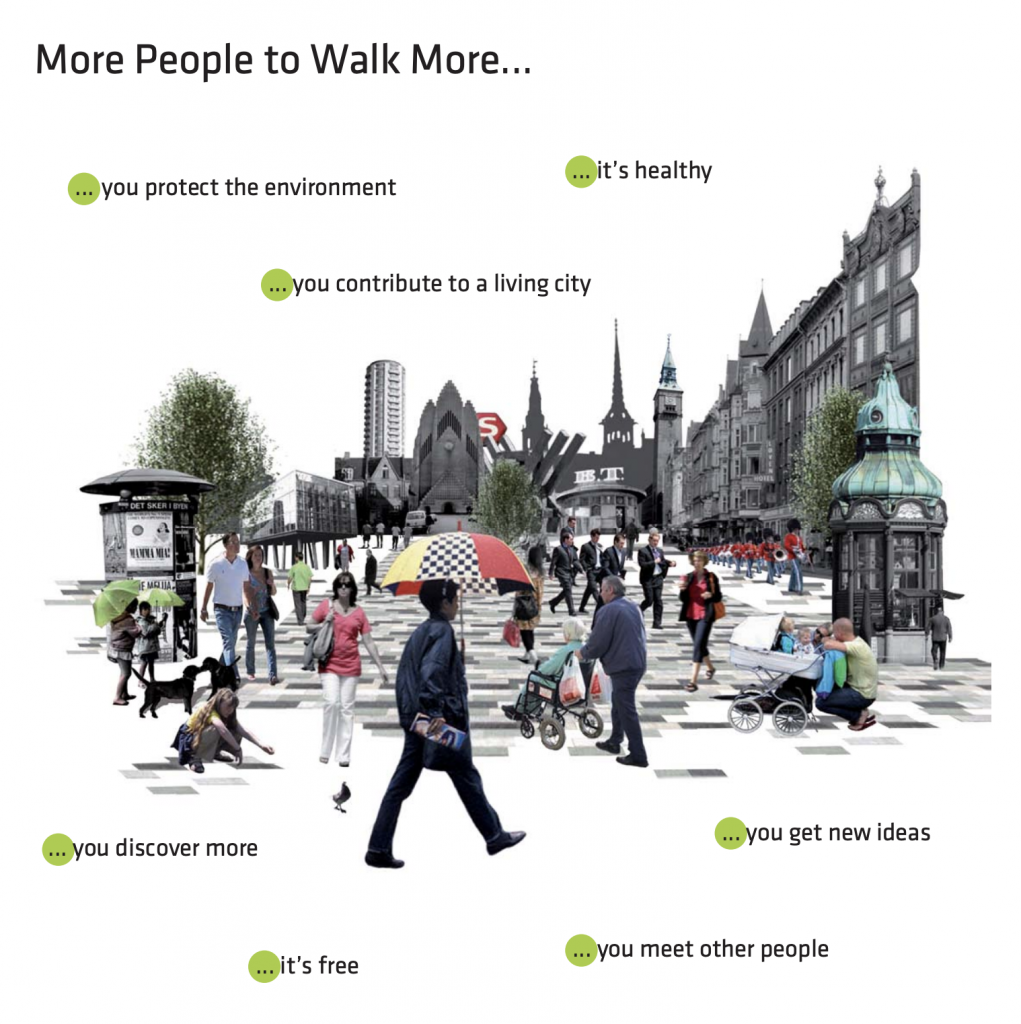Ben Huang
The notion of streets being solely designed to facilitate quick vehicular access must no longer persist – city streets must be designed with pedestrians in mind. Urban areas that are more conducive to walking fare better in many categories, including economic equality, environmental sustainability and social wellbeing.
The invention of the automobile in the 19th century fundamentally changed how humans live. No longer were individuals bound to a small walking-distance radius centred around home, men and women could commute from home in suburbs to work in concentrated urban centres. With this demand, many cities repurposed their roads to facilitate a large number of a cars, ranging from highways to parking lots.
This behavioural shift came not without issues. Among them are the growth in inequality between poorer inner-city families and wealthier suburban households (or the vice versa in Europe), increases in air pollutants as a result of more vehicles, and decreases in community engagement due to a decentralisation of human activity and lack of space sacrificed for cars1.
However, cities have recently began to reverse this trend by reinstalling zones that only allow foot traffic or focus on pedestrians while allowing some cars. These cities, a high concentration of them in Europe, have seen many benefits, many of which counter the issues that arose with an increased reliance on cars. Furthermore, the economic, environmental and social impacts have been conducive towards the United Nations Sustainable Development Goal 11, which necessitates each city to provide critical infrastructure and a good living quality for its residents.
Therefore, currently existing cities must reorganise streets to cater toward pedestrians, and future urban design must keep walkers in mind. With that in mind, this blog will examine the economic, environmental and social benefits of streets that easily facilitate walking.
Better Streets lead to Economic Benefits
In the realm of economic impact, pedestrian-focused cities are able to reduce income inequality and promote small businesses. In the USA, cities where individuals moved out of city centres to suburbs witnessed the rise of disenfranchised, poorer and minority-concentrated inner-city communities. Unless cities can attract people to return to cities, these communities will continue to be underdeveloped, and creating streets that facilitate public use would be conducive towards this goal1.
Furthermore, pedestrian zones also generate opportunities for livelihood opportunities for residents, such as shops, cafes and restaurants. By replacing large shopping centres, these small businesses support local communities1.
Walking on Streets places less Stress on the Environment
The environmental benefits are numerous too. For instance, Nuremberg, Germany witnessed a 30% decrease in nitrogen dioxide and 15% decrease in carbon monoxide between 1982 and 19892. This improvement was directly attributed the reinstating of a pedestrian city centre which drove vehicular use down. In Strasbourg, France, following the implementation of removing cars from its city centre, alternative environment-friendlier transportation, such as bike, usage went up2. This shows that decreasing the number of roads available for cars decreased carbon emissions from vehicles.
Not only did the reduction of traffic lead to a decrease in emissions from vehicles, it also encouraged individuals to modify their work-life habits. This includes inhabitants’ back to city centres to be closer to work and increased usage of public transportation, contributing to a lower per capita carbon footprint2.
Smart Streets leave Social Impacts too
In a report by the city of Copenhagen, pedestrian zones in cities are shown to have positive social benefits. This includes the creation of new space for public meetings and an improvement in health from increased physical activity3. In alignment with Sustainable Development Goal 11, which urges cities to create many public spaces for their residents, streets have the potential to become these locations to foster community.

Figure 90.1 – Benefits of Walking More
References
1 More People to Walk More: The Pedestrian Strategy of Copenhagen, City of Copenhagen, fussverkehr.ch/wordpress/wp-content/uploads/2016/09/944_kJ1jmWQff0.pdf.
2 Reclaiming City Streets for People. European Commission Directorate-General for the Environment, ec.europa.eu/environment/pubs/pdf/streets_people.pdf.
3 “Reimagining Our Streets as Places: From Transit Routes to Community Roots.” RSS, www.pps.org/article/reimagining-our-streets-as-places-from-transit-routes-to-community-roots.